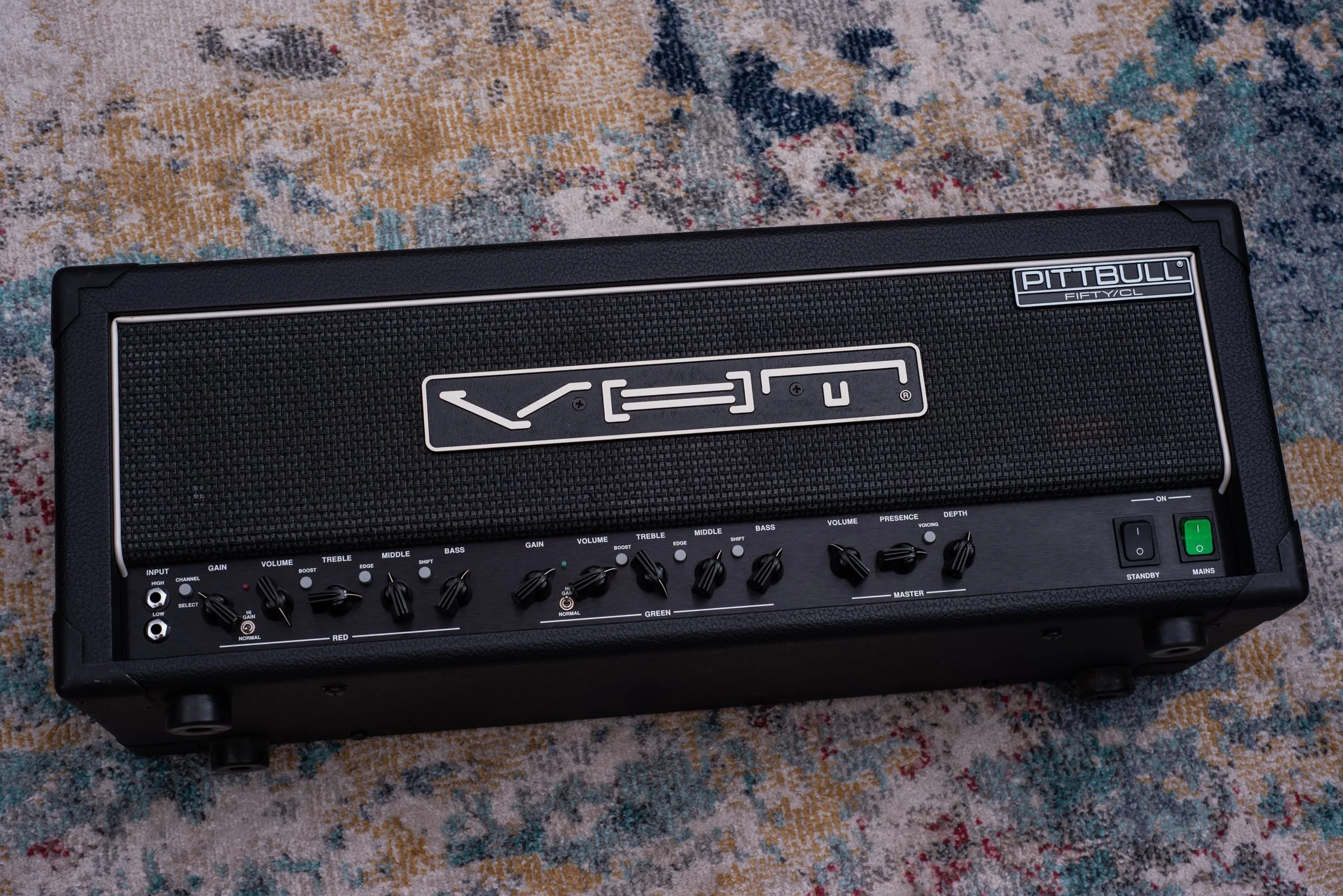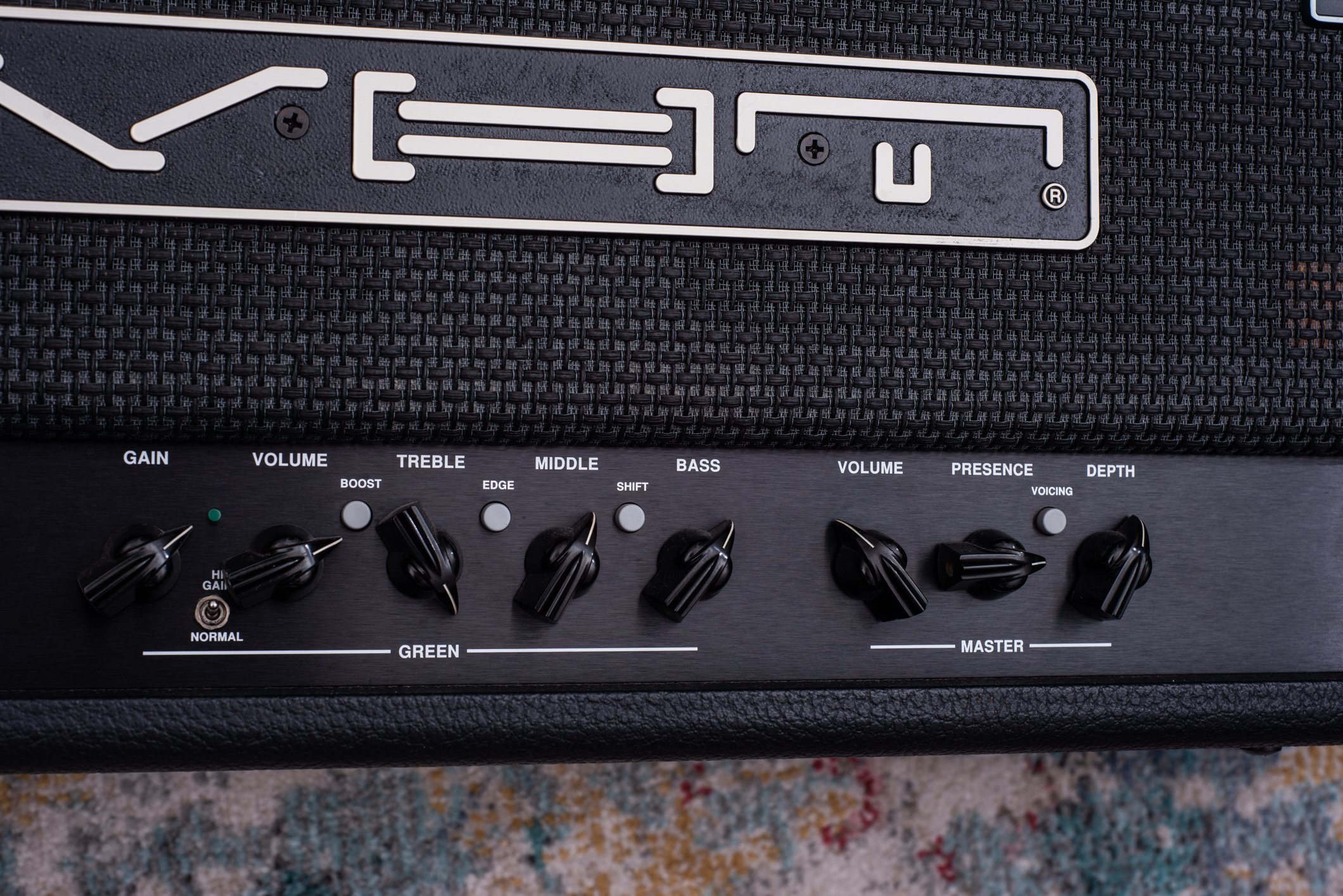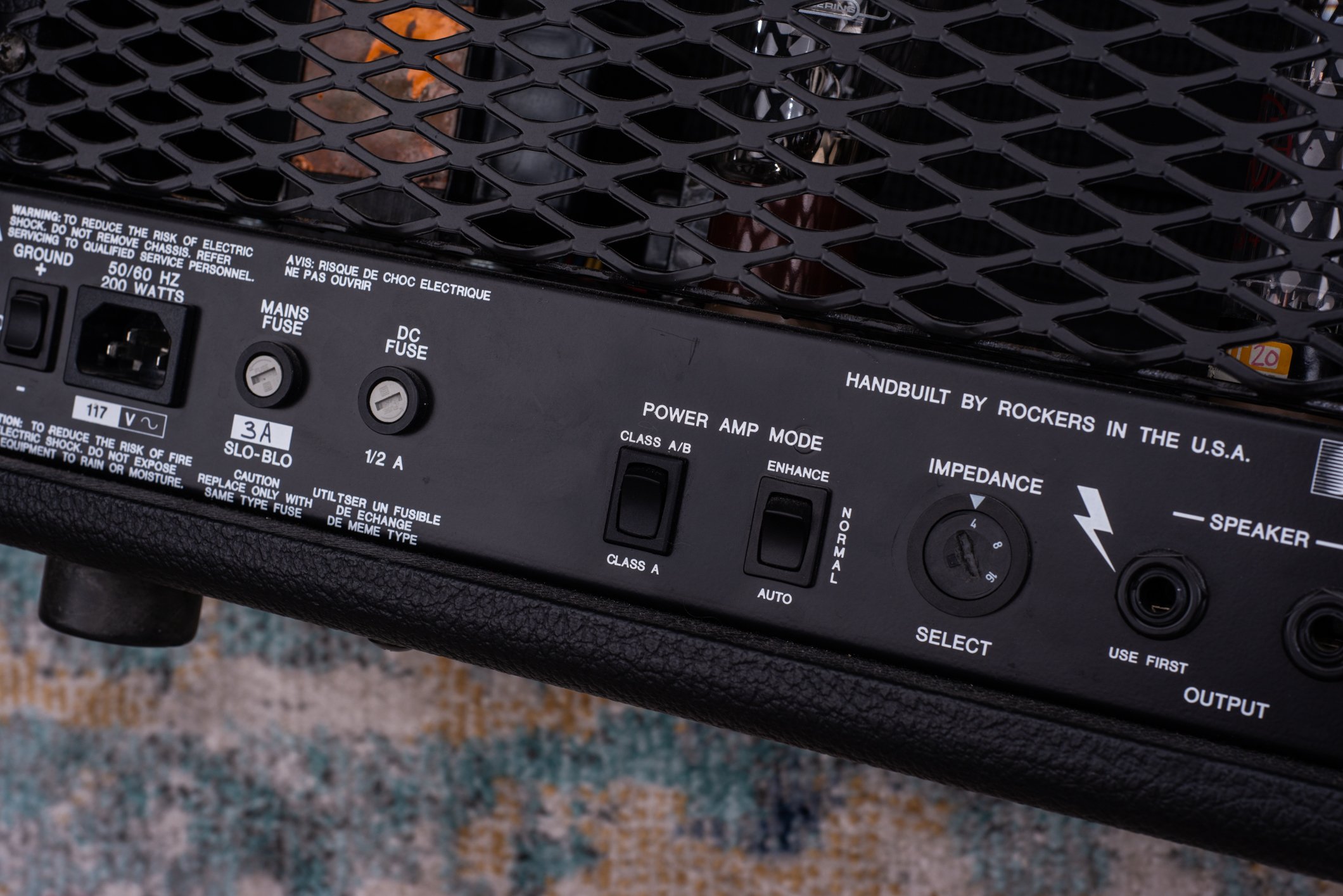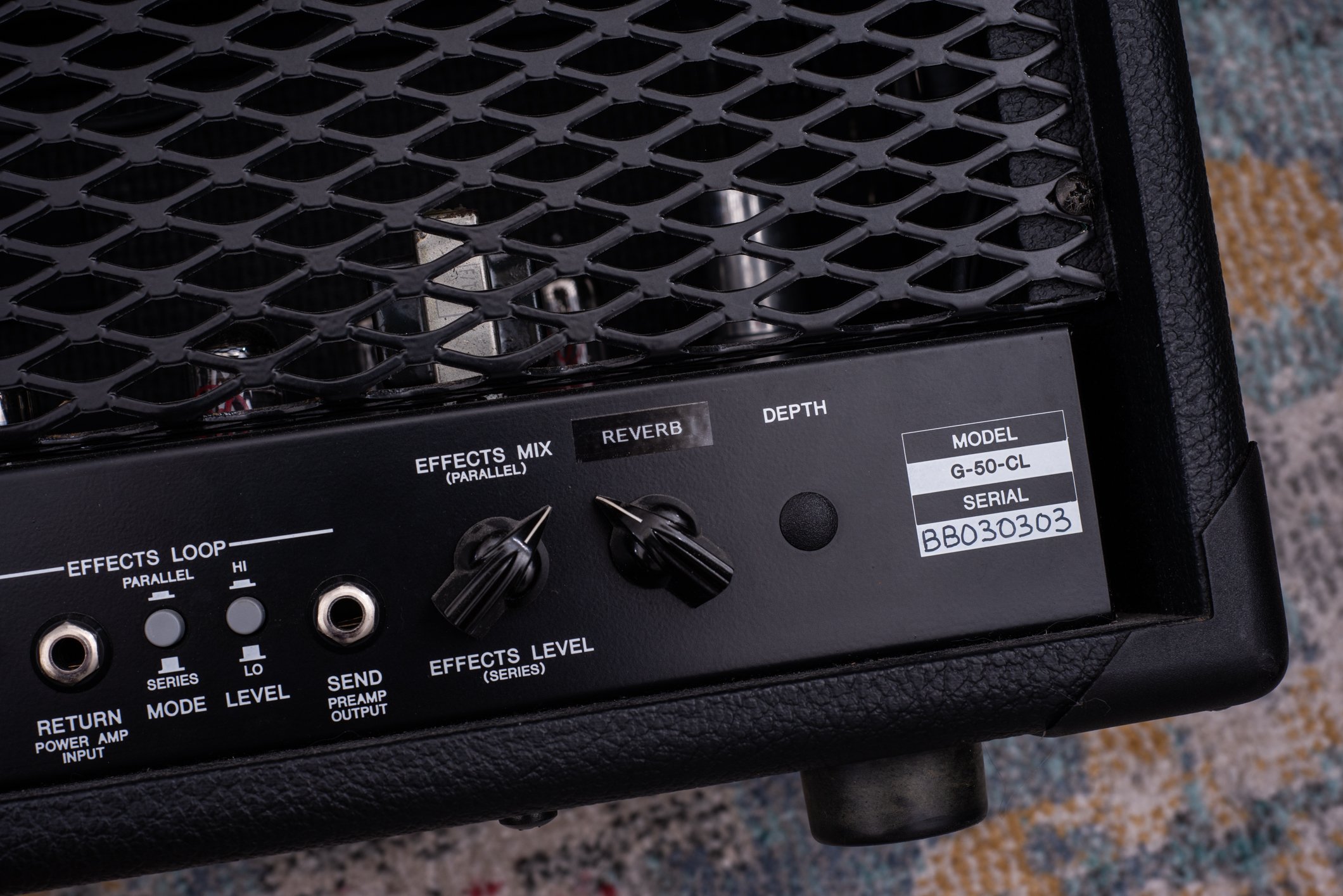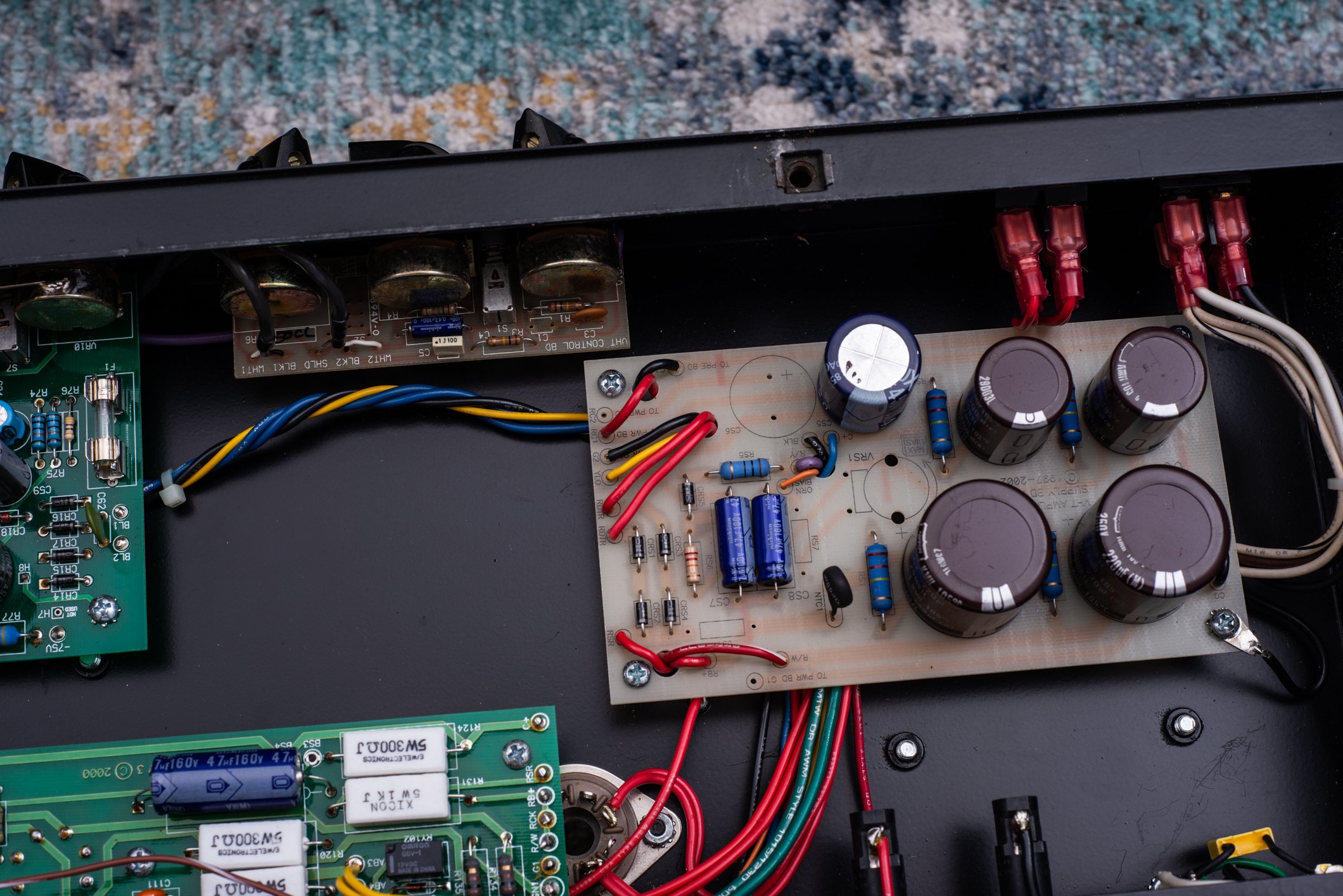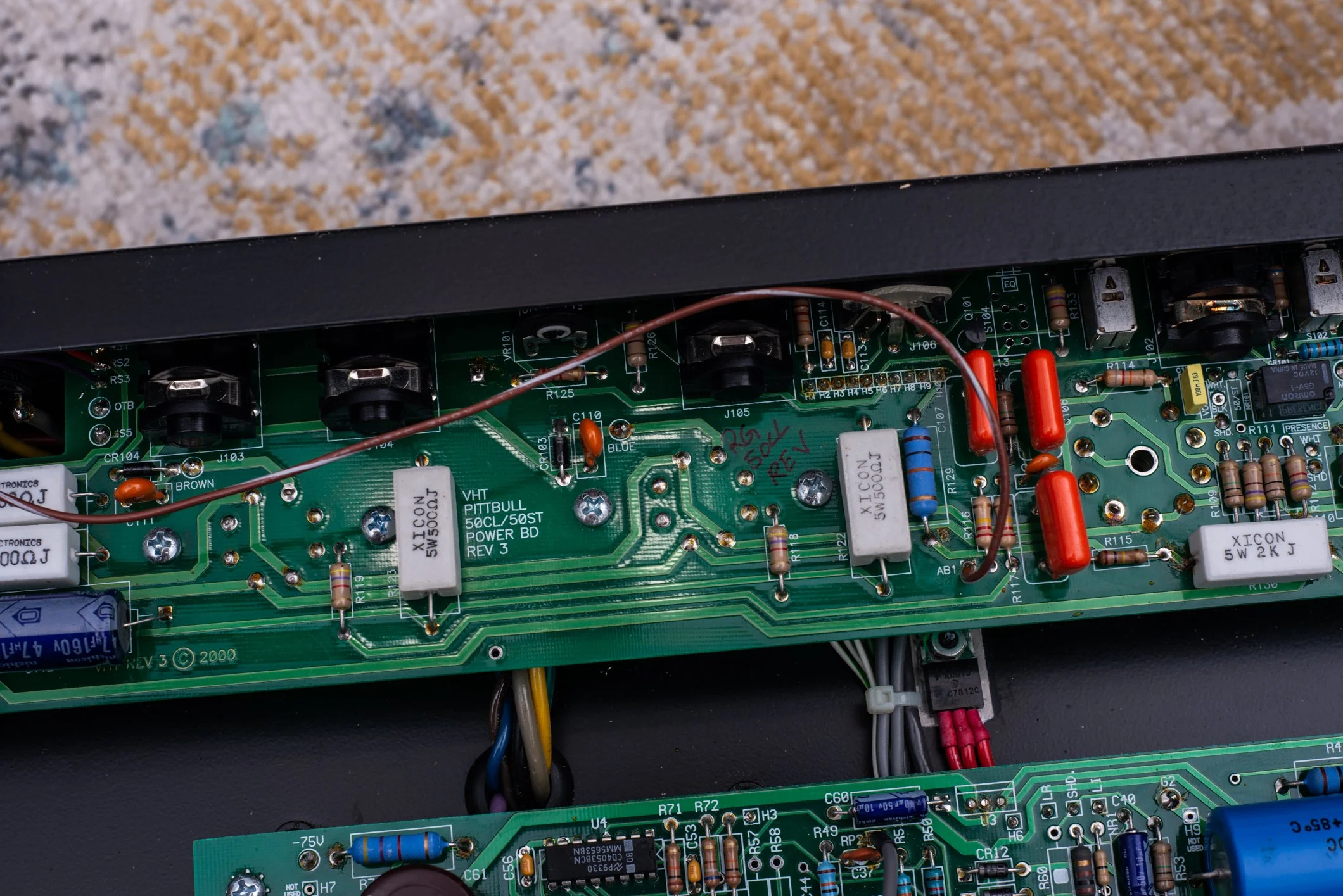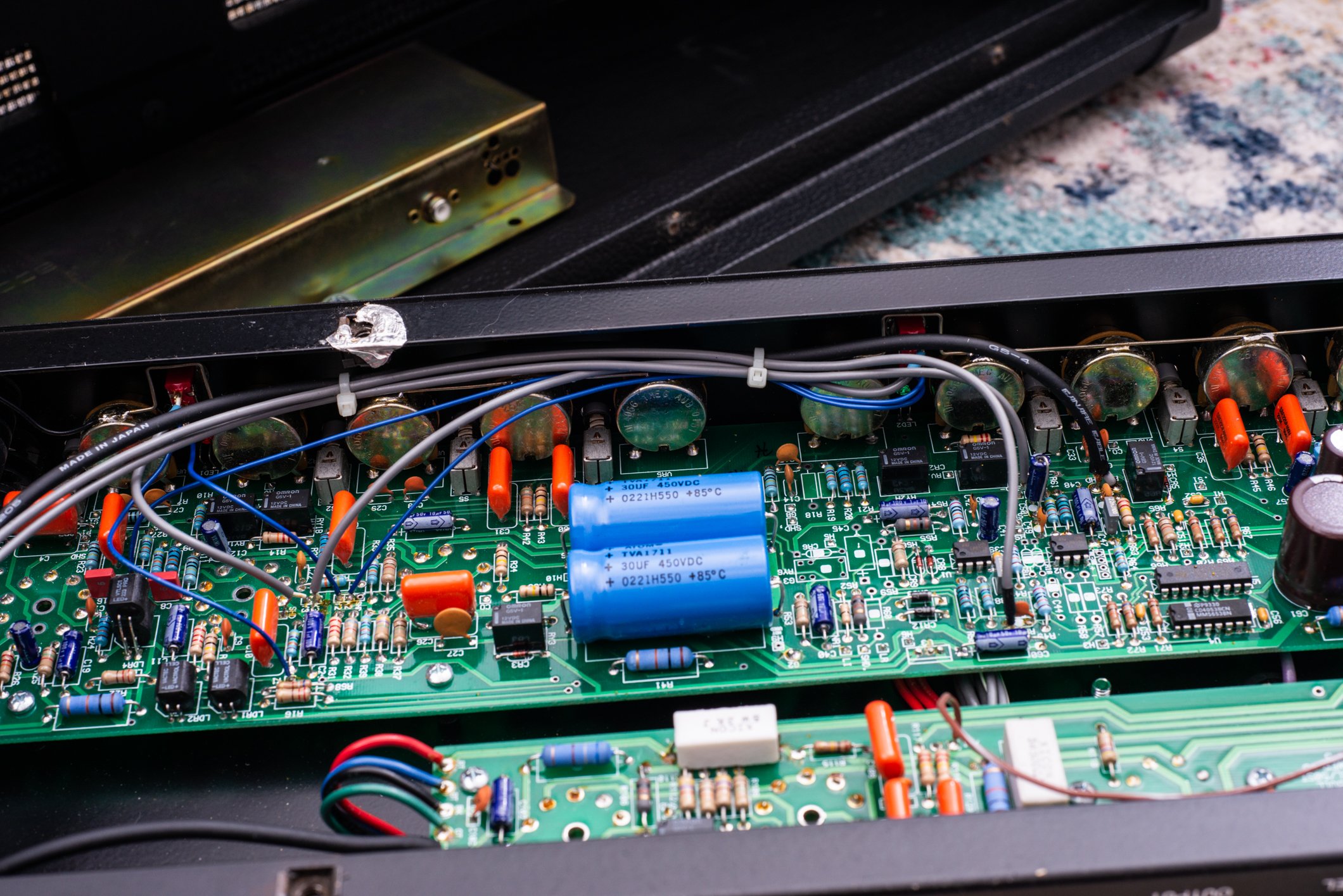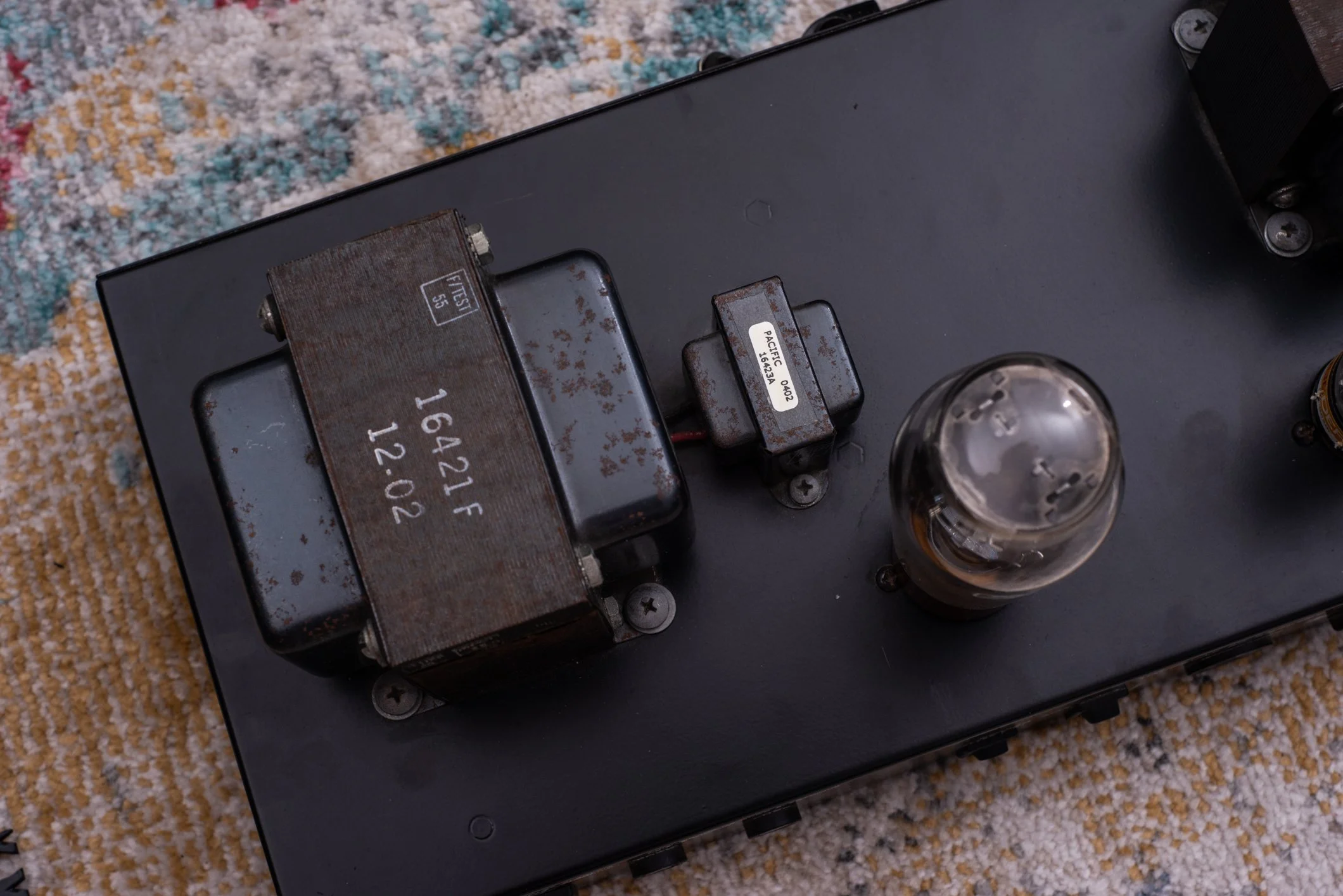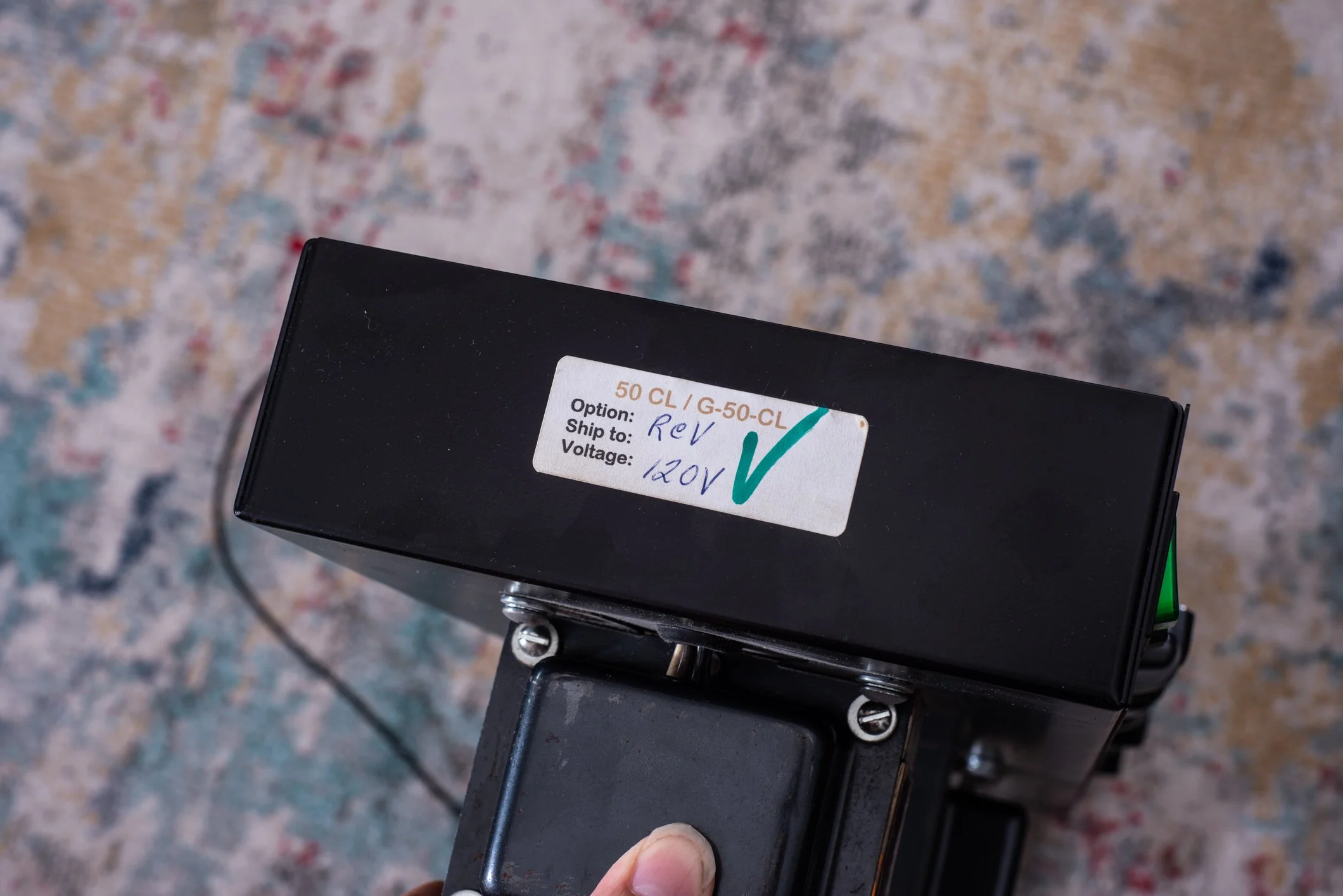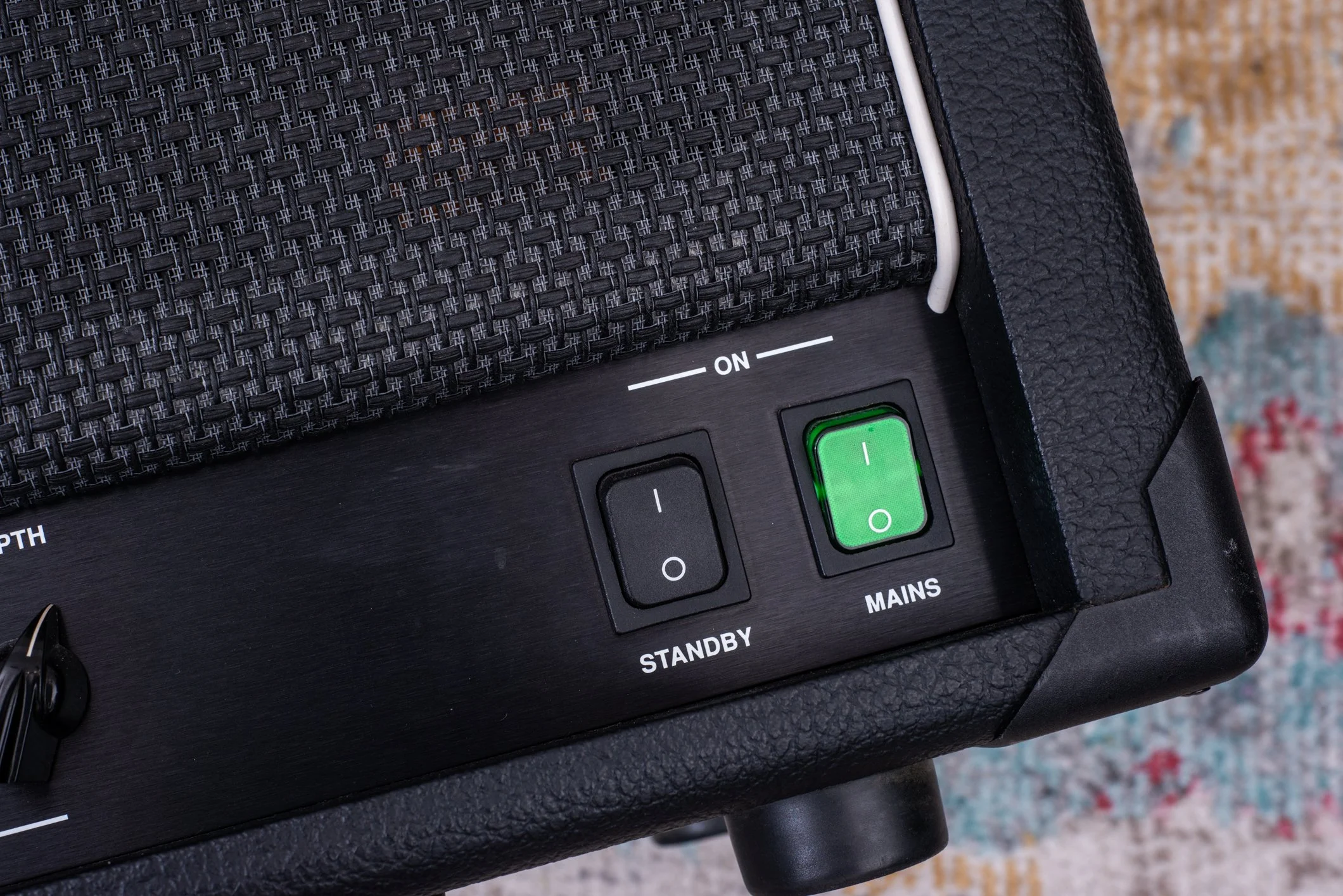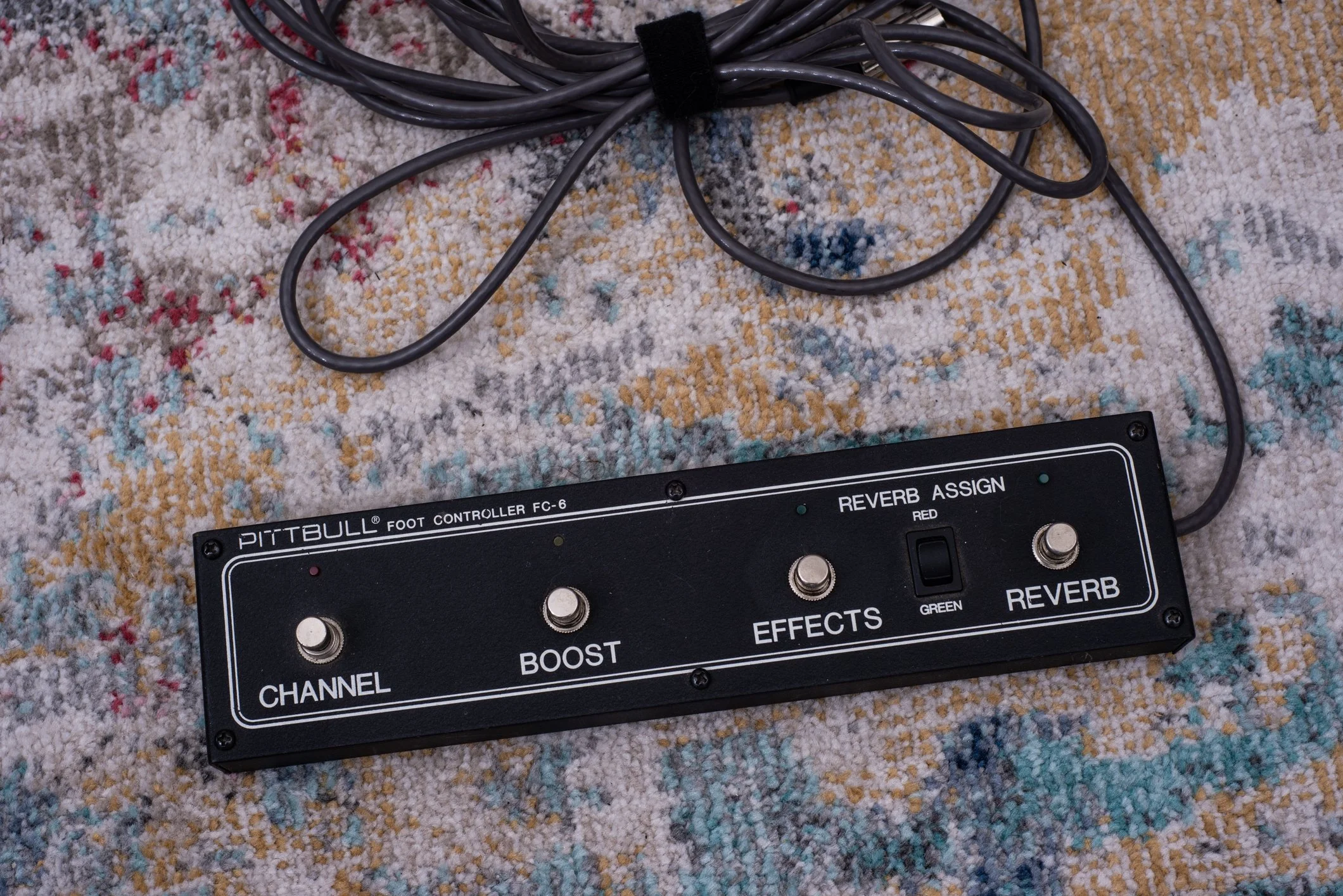2003 VHT Pittbull 50/CL Reverb
Specs
2 Channels
50w Output
2x EL34 Power Tubes
1x 5U4 Rectifier Tubes
4x 12AX7 Preamp Tubes
1x EF86 Reverb Tube
Accutronics Spring Reverb
Sun Valley, CA Era
Overview
I purchased this amp a while back with very little research, basically just based on brand name and a general reputation for being a great amp. It’s quite different from my usual shopping process today, which usually involves a lot more research, listening to clips, and then waiting & waiting for the perfect deal to show up.
Despite the impulsive nature of the purchase, this quickly became “my sound” for a long time, and it’s still in my top few amps for its incredibly unique and wonderful gain tones. It’s thick and full sounding, and extremely dark when the gain is near max. I regularly run it with the settings shown in the top picture - gain maxed, treble maxed to get some cut back, and presence very high as well. Despite these extreme EQ settings, it is not thin sounding at all and easily shakes the room, but cuts for lead lines. One of the reasons I like it so much is even with these settings and single-note fullness, the low end never gets muddy and palm mutes and chugs are still defined and punchy. Truly, a fantastic piece of kit.
My particular amp has the tube spring reverb option, instead of the graphic EQ. The EF86 powered spring reverb is very good sounding, although it doesn’t get quite wet enough to do genres like surf, but since this amp doesn’t really have a clean channel anyway, it works great for adding just a little bit of air to the drive tones. Since there’s no GEQ, it does have a “voicing” switch, which is essentially a preset “V” shaped EQ, not an extreme one, but it does add a little extra low end and high treble and makes the sound a little more clear under heavy gain.
Like all “CL” amps, this has two identical channels, called “Red” and “Green.” Each has the same controls - gain, volume, treble, middle, and bass. The real magic is in the switching options though - each has a two-way “hi gain” switch which adds another tube gain stage, a footswitchable boost, edge, and shift controls. The most aggressive tone is all switches “on,” and that’s my preferred lead tone as well. Hi Gain is fairly self explanatory. The Boost is a little more subtle than a front end overdrive pedal, only a slight gain boost but thickens up the sound - the boost sounds its best when the gain is set a little lower than max, making the boost more noticeable when it is turned on. Edge is an upper mids boost, which adds the “feel” of more gain and increases cut in a busy mix, and a little more sizzle especially when holding onto a distorted chord. Shift on tightens up the bottom end, making things a bit more punchy in the lows and really brings those palm mutes out, but leave it off and you can get a little more classic, rounded off low end that is fantastic for lower gain tones.
The 50CL differs slightly from the 100CL in that this amp has a tube rectifier, which can be enabled all the time, bypassed completely, or in my preferred setup, automatically on for the Red channel but off on Green. This is why I use the Green as my main drive sound as well, it’s tighter and angrier sounding with the silicon rectifier engaged, then when I go back to Red for my lower gain tones I get the silky feel of the tube rectifier.
Overall, one of my favorites and one of the few amps I really feel like I need another of, especially one with the graphic EQ.
